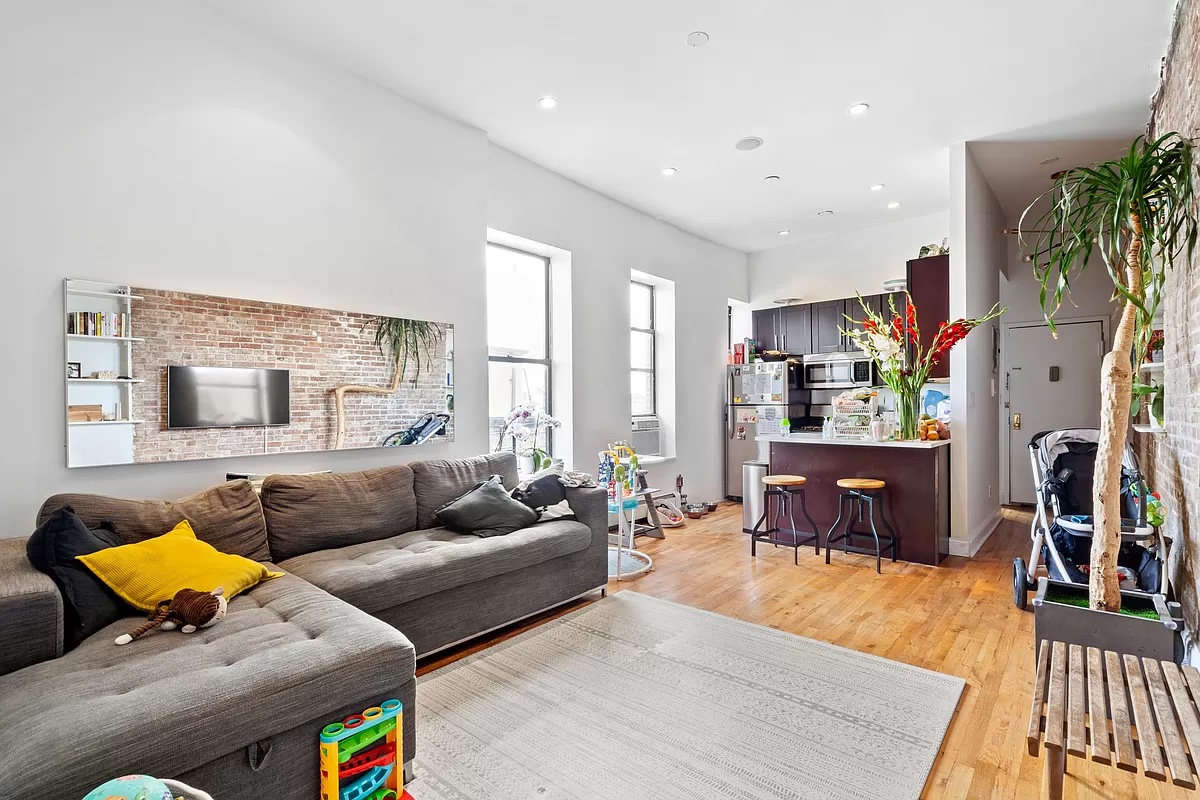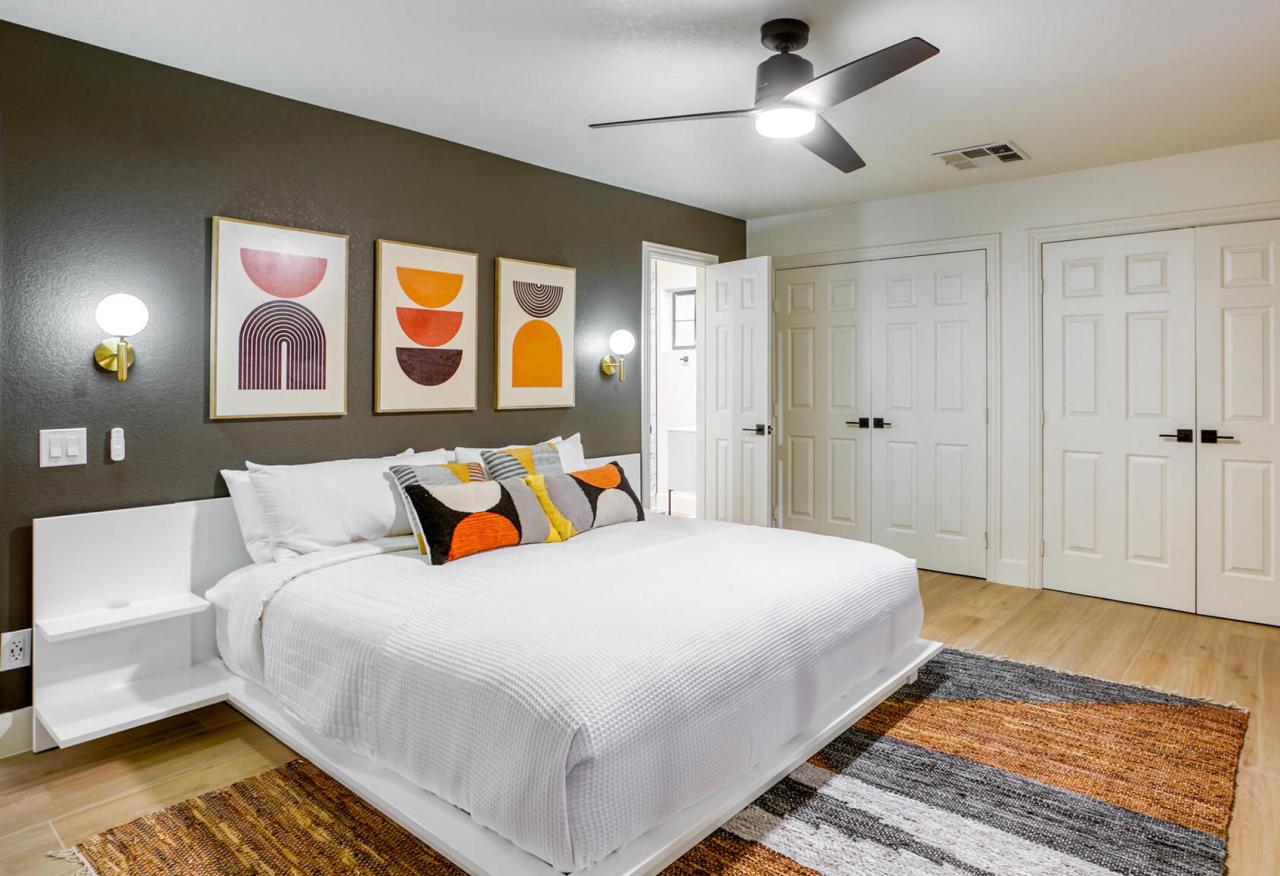The landscape of travel accommodation has been dramatically reshaped, with Short-Term Rentals evolving from a niche alternative into a dominant force in global hospitality. What began as a casual way for individuals to rent out spare rooms has blossomed into a sophisticated, multi-billion dollar industry, challenging traditional hotels and catering to a new generation of travelers seeking unique, localized, and flexible stays. This comprehensive article delves into the dynamic world of short-term rentals, exploring the key factors propelling their growth, the diverse forms they now take, the challenges they navigate, and the transformative trends shaping their future. It’s a journey into how temporary living is redefining the very essence of modern travel.
The Rise of Flexible Stays

Short-term rentals, broadly defined as residential properties offered for temporary stays (typically less than 30 days), have fundamentally altered how people experience destinations. They offer a compelling alternative to conventional hotels, providing a blend of home comforts, local immersion, and often greater value, particularly for longer trips or group travel. This segment’s growth signifies a broader shift in traveler preferences away from standardized experiences towards more authentic, personalized, and flexible living arrangements.
At its core, the evolution of short-term rentals is characterized by:
A. Diversified Accommodation Types: Beyond traditional apartments and houses, the market now includes unique listings like treehouses, glamping tents, boats, renovated historical properties, and even castles, catering to niche desires for extraordinary stays. This broadens the appeal far beyond simple residential units.
B. Technology-Driven Platforms: The industry’s rapid expansion is inextricably linked to the rise of robust online platforms (e.g., Airbnb, Vrbo, Booking.com, Agoda Homes) that connect hosts and guests, facilitating seamless search, booking, payment, and communication. These platforms provide trust and infrastructure.
C. Emphasis on Local Immersion: Unlike insulated hotels, short-term rentals often place guests directly within residential neighborhoods, fostering a stronger sense of local life, culture, and community interaction. Guests can live like locals, frequenting neighborhood shops and eateries.
D. Home-Like Amenities: The inclusion of full kitchens, laundry facilities, separate living areas, and multiple bedrooms offers a “home away from home” experience, appealing to families, groups, and long-stay travelers who value space and self-sufficiency.
E. Flexibility in Duration: Renters can often book stays for just a few nights, a week, or even months, providing a level of flexibility that traditional hotels, with their typically higher daily rates, often cannot match for extended periods.
Driving Forces Behind the Short-Term Rental Boom
The explosive growth of short-term rentals is not a fleeting trend but a fundamental shift fueled by a confluence of evolving traveler demands, technological enablement, and economic factors.
A. Changing Traveler Preferences
Modern travelers, particularly Millennials and Gen Z, increasingly prioritize authentic, local, and unique experiences over standardized luxury. They seek to “live like a local” rather than merely visit, and short-term rentals, often nestled in residential areas, provide this immersion, fostering a deeper connection with the destination’s culture and community.
B. The Power of Technology Platforms
The rapid advancement and widespread adoption of user-friendly online platforms (like Airbnb, Vrbo, Booking.com’s Homes & Apartments, Traveloka’s Villa & Apartment in Indonesia) have democratized the rental market. These platforms provide secure booking, payment processing, communication tools, and robust review systems, building trust and facilitating seamless transactions between hosts and guests globally. Without this technological infrastructure, the boom would not have been possible.
C. Desire for Space and Amenities
For families, groups of friends, or travelers on extended trips, short-term rentals offer significantly more space and practical amenities than typical hotel rooms. Full kitchens, multiple bedrooms, separate living areas, and laundry facilities provide comfort, convenience, and cost savings on dining out and personal services, making them highly attractive.
D. Value for Money
Often, especially for larger groups or longer stays, a short-term rental provides a more cost-effective accommodation solution compared to booking multiple hotel rooms or expensive suites. This allows travelers to stretch their budget further, freeing up funds for experiences, dining, or other leisure activities.
E. Flexibility and Diverse Options
The sheer variety of short-term rentals, from urban apartments and beach houses to treehouses and eco-lodges, caters to almost every taste and budget. Furthermore, platforms offer flexible booking durations, allowing for stays from a single night to several months, accommodating various travel styles from quick getaways to long “workations.”
F. Rise of Remote Work and “Bleisure” Travel
The global shift towards remote and hybrid work models, accelerated by recent global events, has blurred the lines between business and leisure. Digital nomads and “bleisure” travelers (combining business trips with extended leisure stays) actively seek accommodations that offer comfortable workspaces, reliable internet, and home-like amenities for longer periods, a need perfectly met by many short-term rentals.
G. Economic Opportunity for Hosts
The short-term rental market offers significant economic opportunities for property owners. Individuals can monetize spare rooms, vacant properties, or even their primary residence while away, generating substantial income that can help offset mortgage payments or provide supplementary earnings. This large supply side fuels the market.
Defining the Modern Short-Term Rental Ecosystem

The contemporary short-term rental landscape is multifaceted, encompassing various models and professionalized operations far beyond casual peer-to-peer sharing.
A. Peer-to-Peer (P2P) Rentals
This is the original model, where individual homeowners or tenants rent out a spare room, a portion of their home, or their entire property for short periods. This model emphasizes authenticity, direct host-guest interaction, and a more personal touch. It relies heavily on reputation systems (reviews).
B. Professional Property Managers
As the market matured, professional property management companies emerged to manage portfolios of short-term rentals on behalf of property owners. They handle everything from listing creation, pricing, guest communication, cleaning, and maintenance, offering a more standardized and often higher-quality experience. This professionalization has attracted more institutional investors.
C. Branded Apartment Hotels / Aparthotels
These are essentially hotel-style operations offering apartment-like accommodations with full kitchens and living areas, but with hotel services (e.g., daily housekeeping, front desk, concierge, common amenities like gyms). They combine the space of a rental with the convenience of a hotel, appealing to business travelers and families seeking extended stays.
D. Hybrid Models and Blended Living
New models are blurring the lines between hotels, rentals, and co-living spaces. Some properties offer a mix of private rooms, apartments, and shared communal spaces (co-working areas, social lounges), catering to diverse needs from short-term leisure to long-term remote work stays.
E. Niche and Experiential Rentals
The market has specialized to offer highly unique and themed rentals, focusing on specific experiences:
- Glamping Sites: Luxury tents, yurts, domes, or treehouses offering an upscale outdoor experience.
- Farm Stays: Rural properties offering guests a chance to experience farm life.
- Luxury Villas/Mansions: High-end, often fully staffed, properties for exclusive getaways.
- Unique Architecture: Stays in repurposed buildings like lighthouses, churches, or converted trains.This segment caters to travelers seeking a truly memorable and distinctive stay beyond standard residential units.
Challenges and Opportunities in the Evolving Landscape
The rapid expansion of short-term rentals presents both significant challenges and vast opportunities for all stakeholders.
A. Regulatory Hurdles and Legal Compliance
Challenge: Local governments grapple with balancing economic benefits with concerns over housing affordability, neighborhood disruption (noise, transient populations), and fair taxation. This leads to a patchwork of often complex and restrictive regulations, including licensing, zoning restrictions, and limits on rental days, creating legal uncertainty for hosts and operators.
Opportunity: Clear and fair regulations can legitimize the industry, foster trust, and provide a stable environment for responsible growth, encouraging long-term investment and innovation.
B. Maintaining Quality and Consistency
Challenge: Unlike standardized hotels, the quality of short-term rentals can vary wildly. Issues with cleanliness, inaccurate listings, poor communication from hosts, or unexpected problems can lead to negative guest experiences and damage the industry’s reputation.
Opportunity: Platforms are investing in quality assurance programs, verification processes, and host education. Professional property managers ensure consistent high standards, attracting more discerning travelers and building brand trust.
C. Neighborhood Integration and Community Relations
Challenge: High concentrations of short-term rentals can strain local resources, increase traffic, alter neighborhood character, and lead to resentment from long-term residents due to noise or reduced community cohesion.
Opportunity: Responsible operators engage with local communities, implement good neighbor policies (e.g., noise monitoring), contribute to local services, and promote respectful guest behavior, fostering positive relationships and showing local benefits.
D. Competition and Market Saturation
Challenge: The low barrier to entry means many individuals can become hosts, leading to market saturation in popular areas, intense competition, and downward pressure on pricing, especially for generic listings.
Opportunity: Innovation in unique offerings, specialized niches (e.g., pet-friendly luxury, wellness-focused rentals), superior guest service, and strong branding allow properties to stand out and command premium rates.
E. Technology Adoption and Management
Challenge: While technology drives the industry, hosts need to be tech-savvy enough to manage listings, communicate effectively, utilize dynamic pricing tools, and potentially integrate smart home devices. Smaller hosts might struggle with the complexity.
Opportunity: Platforms are continuously improving user-friendliness, and property management software is becoming more sophisticated and accessible, democratizing access to advanced tech for hosts of all sizes.
F. Health and Safety Standards
Challenge: Ensuring consistent health and safety standards across millions of diverse properties can be difficult, particularly in areas like fire safety, accessibility, and hygiene, compared to hotels with established industry-wide regulations.
Opportunity: Platforms are providing guidelines and resources for hosts. Professional managers implement rigorous cleaning protocols and maintenance checks. Guests are also increasingly diligent in checking reviews for safety and cleanliness.
The Future of Short-Term Rentals
The short-term rental market is poised for continued evolution, driven by innovation, advanced technology, and changing traveler behaviors. The future promises an even more sophisticated, diverse, and integrated ecosystem.
A. Hyper-Personalization Driven by AI and Data: AI and machine learning will enable unparalleled personalization. Platforms will analyze vast amounts of guest data (preferences, past stays, search history) to recommend not just properties, but specific experiences, local activities, and even pre-stocked amenities tailored to individual needs, making every stay feel uniquely curated.
B. Integrated “Workation” Ecosystems: The blurring of work and travel will deepen. Short-term rentals will evolve into comprehensive “workation” ecosystems, offering dedicated, ergonomic workspaces, robust connectivity (including satellite internet in remote areas), and integrated access to co-working facilities, blurring the lines between a rental, an office, and a community hub.
C. Seamless Guest Journeys via Advanced Tech: The entire guest journey will become virtually frictionless. Biometric check-in (where culturally acceptable and consented), smart locks, AI-powered chatbots for instant support, and augmented reality (AR) for in-property navigation or local exploration will be standard, making every interaction effortless.
D. Modular and Adaptable Living Spaces: Future rentals will feature flexible, modular designs that can be quickly reconfigured to suit different guest needs – converting a bedroom into an office, or combining units for larger groups. This adaptability will optimize space utilization and cater to diverse traveler demands.
E. Sustainability and Regenerative Hospitality: Environmental responsibility will be a non-negotiable standard. Rentals will increasingly feature net-zero energy designs, advanced water recycling systems, composting, and local sourcing. Some will actively engage in regenerative tourism, contributing positively to the local environment and community, going beyond just minimizing harm.
F. Blockchain for Trust and Transparency: Blockchain technology could revolutionize security and trust. It could facilitate secure, transparent booking and payment systems, verify host identities and property authenticity, and provide immutable records for sustainability claims or compliance with local regulations, reducing fraud and greenwashing.
G. “Living as a Service” (LaaS) Models: The rise of subscription-based models will allow remote workers or frequent travelers to pay a recurring fee for access to a network of short-term rentals globally, providing ultimate flexibility, consistent quality, and a built-in community, rather than booking individual stays.
A Guide for Travelers & Hosts
Understanding the evolving nature of short-term rentals is crucial for both guests seeking unique stays and hosts looking to maximize their properties.
For Travelers:
A. Define Your Priorities: Decide what’s most important: budget, location, unique experience, amenities (kitchen, laundry), or privacy.
B. Read Reviews Diligently: Pay close attention to recent reviews focusing on cleanliness, accuracy of listing, host communication, and noise levels.
C. Verify Connectivity: If working remotely, confirm internet speed and reliability directly with the host. Ask for screenshots of speed tests if necessary.
D. Understand Local Regulations: Be aware of any local rules for short-term rentals (e.g., quiet hours) to ensure a respectful stay.
E. Communicate Clearly with Hosts: Use the platform’s messaging system for all communication to ensure a record of discussions. Be clear about your needs and expectations.
F. Check for Added Fees: Look for cleaning fees, service charges, and local taxes that might not be included in the initial nightly rate.
G. Consider Travel Insurance: For longer or more expensive stays, comprehensive travel insurance can protect against unforeseen cancellations or issues.
For Hosts:
A. Understand Local Regulations: Research and comply with all local short-term rental laws, licensing requirements, and taxation rules in your area. Compliance is non-negotiable for sustainable operation.
B. Invest in Quality and Amenities: Provide high-speed internet, a dedicated workspace, comfortable bedding, and a well-equipped kitchen. These are key differentiators.
C. Professionalize Your Operations: Consider using property management software for efficiency. Automate guest communication where possible. Invest in professional cleaning.
D. Optimize Your Listing: Use high-quality photos, write a detailed and accurate description, highlight unique features, and be transparent about fees.
E. Implement Dynamic Pricing: Use pricing tools to adjust your rates based on demand, seasonality, local events, and competitor pricing to maximize occupancy and revenue.
F. Prioritize Guest Communication: Be responsive, proactive, and friendly. Clear and timely communication can prevent many issues and lead to positive reviews.
G. Focus on Niche Markets: Consider specializing (e.g., romantic getaways, family-friendly, pet-friendly, digital nomad-specific) to attract a dedicated clientele and stand out from generic listings.
Conclusion
The evolution of short-term rentals marks a pivotal moment in the history of travel and accommodation. Driven by a powerful combination of technological innovation, shifting traveler desires for authenticity and flexibility, and new economic opportunities, this sector has moved far beyond its humble beginnings. While navigating complex regulatory landscapes and striving for consistent quality, short-term rentals are continuously innovating, offering hyper-personalized, sustainable, and community-integrated experiences. They are not just providing a place to sleep; they are redefining the concept of a “global home away from home,” allowing millions to truly live, work, and explore the world on their own terms. The future of travel is inherently intertwined with the dynamic and ever-expanding world of short-term rentals.













